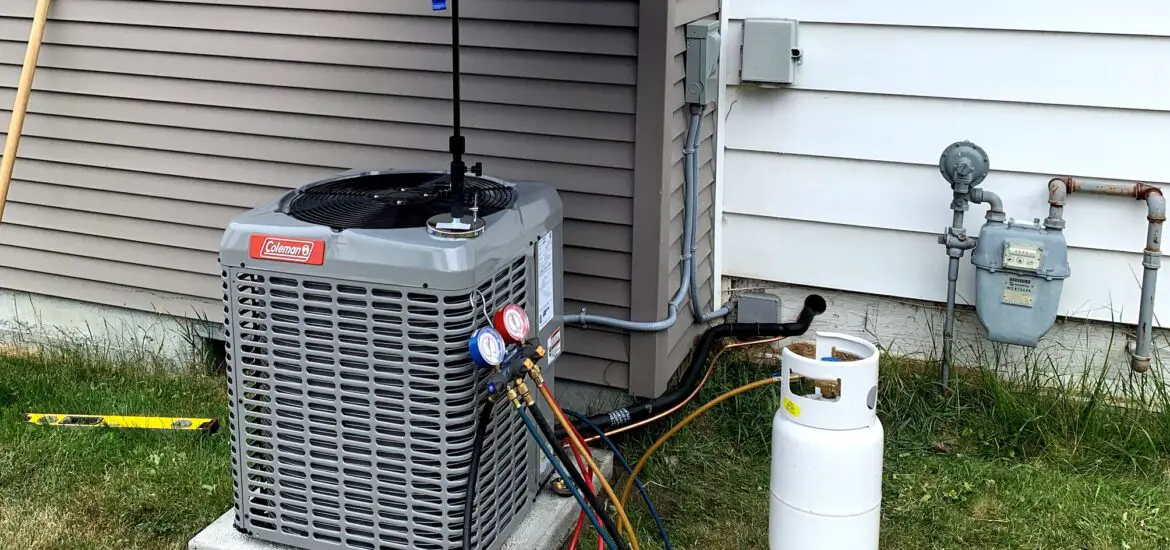When your AC isn’t cooling as it should, you might wonder, “Do freon recharge kits work?” This guide will not only answer that question thoroughly but also walk you through the process of using these kits effectively.

Table of Contents
Do Freon Recharge Kits Work?
Yes, freon recharge kits can work effectively to restore the cooling capacity of your air conditioning (AC) system when used correctly. Freon recharge kits work by allowing you to add more refrigerant to your AC system.
Refrigerant is the substance responsible for cooling the air that circulates through your AC. Over time, due to wear and tear or small leaks, the refrigerant levels can drop, causing your AC to lose its cooling efficiency. Recharging the system can help restore its cooling power.
However, there are limitations to what a freon recharge kit can accomplish. It’s essential to recognize that these kits are best suited for situations where the refrigerant level has decreased due to minor leaks or gradual depletion.
If there’s a significant leak or other complex issues with your AC system, a recharge kit may not provide a long-term solution. In such cases, it’s advisable to consult a professional technician for a complete diagnosis and permanent repair.
Evaluating the Need for a Freon Recharge Kit
Before deciding to use a freon recharge kit, you need to identify signs that your AC system is low on refrigerant. Common indicators include:
Reduced Cooling Efficiency: Your AC may not cool as effectively as it used to, making your living space less comfortable. The air blowing from the vents may feel warmer than desired.
Warm Air Blowing: Instead of the refreshing cool air you expect, your AC may be blowing warm or room-temperature air.
Ice on Evaporator Coils: You may notice the formation of ice on the evaporator coils inside your AC unit. This is often a result of the refrigerant level being too low, causing the coils to get too cold.
If you notice these signs and have ruled out other issues like dirty air filters or thermostat problems, a freon recharge kit may be a viable option. It’s important to address the issue promptly to avoid further discomfort and potential damage to your AC system.
Selecting a Compatible Freon Recharge Kit
Choosing the right freon recharge kit is crucial. To do this:
Check Your AC System: Look in your AC unit’s manual or find a label on the unit itself to determine which type of refrigerant it uses. Commonly, home AC systems use R-22 or R-410A. Make sure the kit you purchase matches this specification.
Using the wrong type of refrigerant can damage your AC system and may even pose safety risks. Always ensure compatibility between the kit and your AC system’s requirements.
Using the Freon Recharge Kit: A Step-by-Step Guide
Here’s a detailed step-by-step guide on how to use your freon recharge kit properly:
Safety First: Before you begin, wear protective gloves like these Hyper Tough Disposable Nitrile Gloves from Walmart and safety glasses to protect yourself from exposure to refrigerant. Ensure the AC system is turned off to avoid any potential accidents.
Locate the Service Port: Find the low-side service port on your AC unit. It’s typically the larger of the two copper lines coming out of the condenser. The service port is where you’ll connect the kit.
Connect the Recharge Kit: Attach the hose from the recharge kit to the service port. Ensure the connection is secure to prevent any leaks. Most kits come with easy-to-use connectors.
Add the Refrigerant: Follow the instructions included with your kit to add the right amount of refrigerant to your system. This usually involves opening the valve on the recharge kit and allowing the refrigerant to flow into the AC system. Be cautious not to overcharge, as this can damage your AC unit.
Check the Pressure: Use the gauge included with your kit to ensure you’re filling the system to the correct pressure. The gauge will help you monitor the process and avoid overcharging.
Finish and Test: After adding the refrigerant, disconnect the kit and turn on your AC. Check the temperature of the air coming out of the system to ensure it’s cooling properly. It may take some time for the system to reach its optimal cooling capacity.
Following these steps diligently will help you use the freon recharge kit safely and effectively. Monitoring the cooling performance after the recharge is essential to ensure the success of the process.
Post-Recharge Checklist
After you’ve recharged your AC system, it’s important to monitor it for any signs of leaks or continued issues. If you notice a rapid drop in cooling efficiency or encounter other problems, follow these steps:
Check for Leaks: Inspect the area around your AC unit for any signs of refrigerant leakage. Look for oily spots or stains, as refrigerant often leaves behind residue when it leaks.
Monitor Cooling Performance: Pay attention to how well your AC is cooling your space. If you notice a decrease in cooling efficiency shortly after recharging, it might indicate a significant leak or other problems that need professional attention.
If you suspect a leak or experience persistent issues with your AC, it’s advisable to consult a professional technician. They can provide a thorough diagnosis and recommend a more permanent solution to ensure your AC functions optimally.
